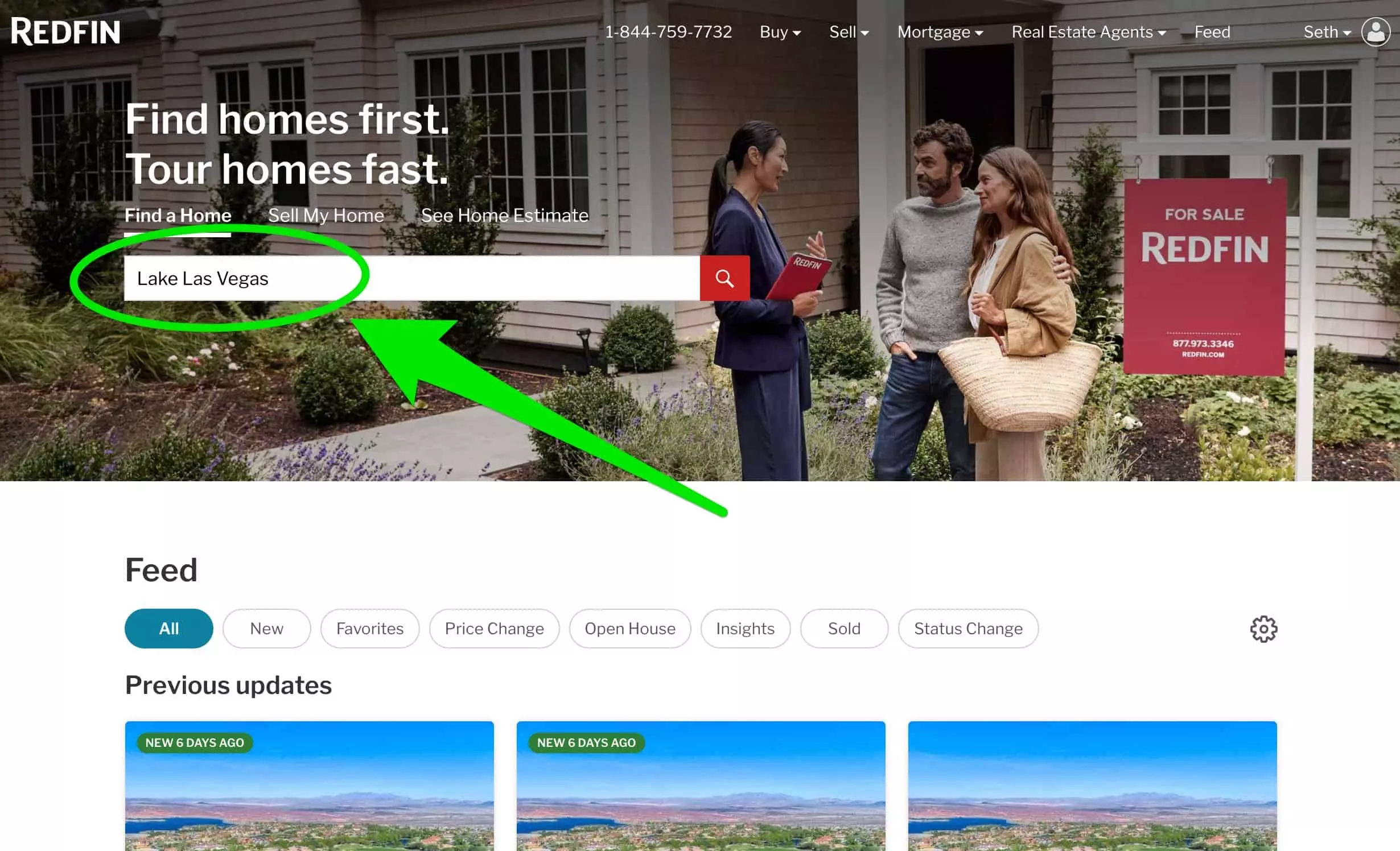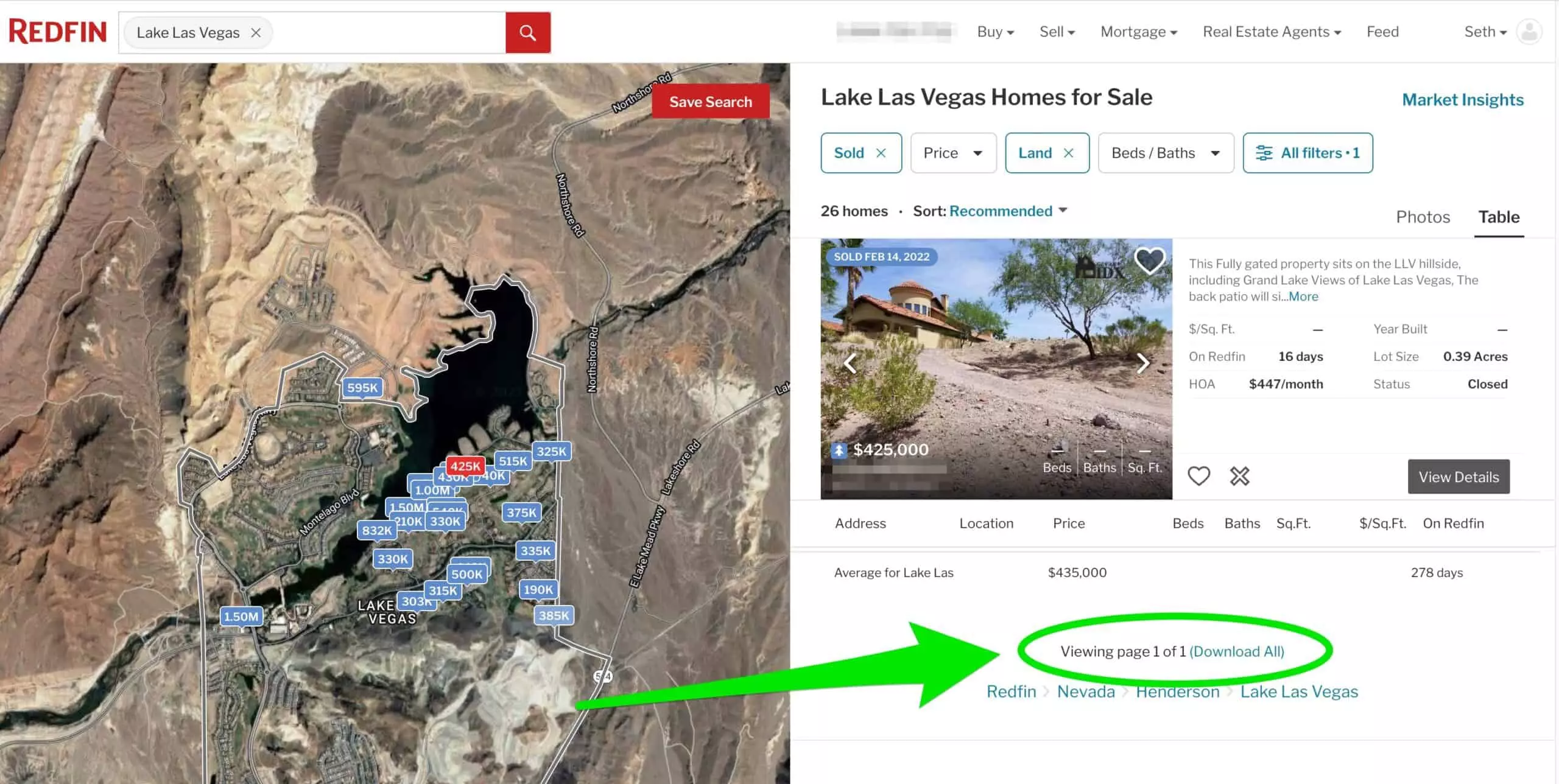There's always been a dilemma when it comes to buying vacant land - how do we determine its true value? Unlike other types of real estate, it is extremely difficult to determine a rock-solid, reliable "market value" for vacant land. This makes it challenging for buyers to have confidence in their purchase.
While there are guidelines that can help in this process, there's also an EPIC trick that can provide a more quantifiable and measurable approach. This trick comes from Karl James, a member of the Land Investing Masterclass, and it involves using Redfin to analyze data with greater mathematical precision.
Step 1: Search the Market in Redfin
Let's say we have a lead on a vacant lot in the Lake Las Vegas area of Henderson, NV. Start by going to Redfin and searching for comparable listings and sales. Type "Lake Las Vegas, NV" in the "Find a Home" dialog box and click on the suggestion that appears.
 Image source: Redfin
Image source: Redfin
Step 2: Customize Your Search
Next, click on the filters button near the top of the screen. In the Filters dialog box, deselect all property types except for Land. Change the "For Sale" option to "Sold" and set the time period for sales to the last 1 year. You can also further narrow down your search based on a size range if there are sufficient comps available.
 Image source: Redfin
Image source: Redfin
Step 3: Export Property Details
Scroll down to the bottom of the properties list on the right-hand side of the screen. At the bottom, click on the "Download All" link. This will create a CSV file that can be opened in Excel, containing all the sales and listing information.
 Image source: Redfin
Image source: Redfin
Step 4: Filter and Organize the Data
When you download the CSV file, you'll need to make a few edits in Excel to make sense of the data. Delete all columns except for Price and Lot Size. Also, delete any rows with blank fields.
Next, add two columns after the Lot Size column and name them Acres and $ / Acre. In the Acres column, use the formula "=C2/43560" to convert lot sizes to acres. In the $ / Acre column, use the formula "=A2/C2" to calculate the price per acre. Finally, at the bottom of the $ / Acre column, enter the formula "=AVERAGE(D2:D27)" to find the average price per acre.
 Image source: Redfin
Image source: Redfin
What Does This Do For Us?
These calculations tell us how many dollars per acre were paid for each property. By comparing this information to the property you're interested in, you can get a better idea of the general price range you should be considering.
Watch Out for This...
Remember, the more specific and similar you make your filtering criteria on Redfin, the more reliable your numbers will be. Including all vacant land sales in a county over a long period of time can lead to wild variations in value, making your final average less reliable. Try to use appropriate comparables for an apples-to-apples comparison.
When Redfin Doesn't Work (Data Scraper Alternative)
In some cases, Redfin may not allow you to download the CSV file or may not work at all in certain markets. In such situations, you can use data scraper tools like Instant Data Scraper or Data Miner Chrome extensions to extract the necessary information. Alternatively, you can use LandWatch and follow the same process explained earlier, using the instant data scraper Chrome extension.
Don't Forget: This Doesn't Account for Everything
It's important to note that this method is not fool-proof. Factors like the physical attributes and location of the property can greatly affect its market value. Additionally, there are other variables that may come into play. However, if you're unsure where to start and don't want to rely solely on the county's assessed value, this method can provide you with highly relevant, real-world data to estimate a property's market value before making an offer.
Have fun exploring the possibilities with Redfin!

















